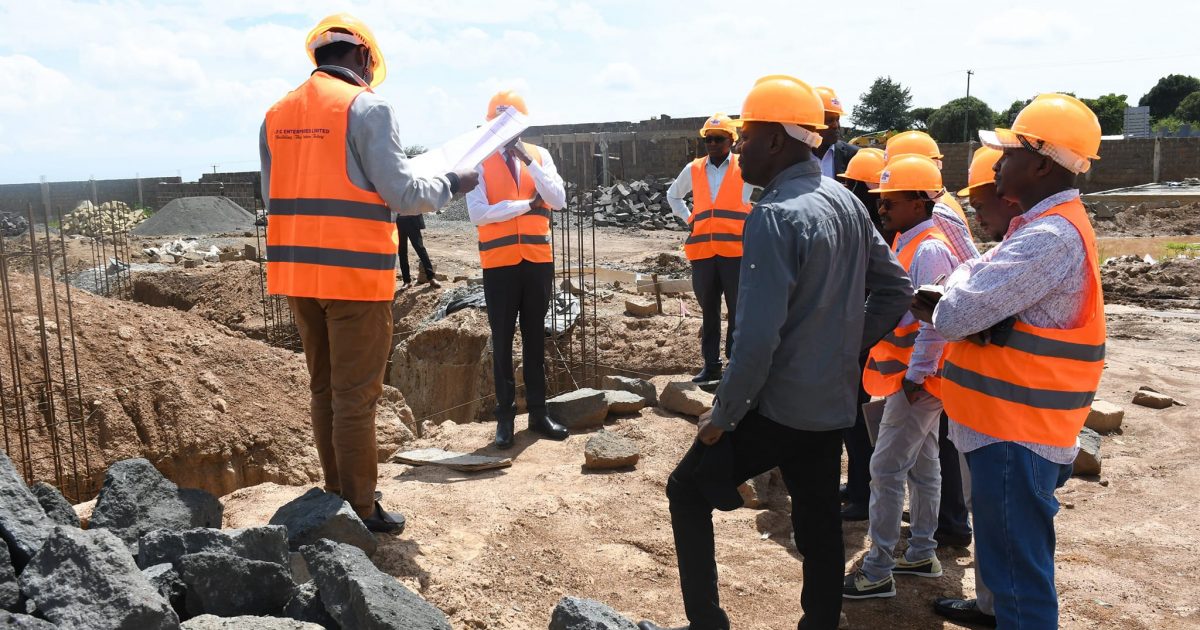President William Ruto’s flagship County Aggregation and Industrial Parks (CAIPs) have run into trouble in several counties, with numerous delays, financial shortfalls, and unresolved land issues blocking progress, according to a new report by the Auditor General.
The parks, launched under Ruto’s Bottom-Up Economic Transformation Agenda, were intended to boost manufacturing and agricultural value chains by bringing together farmers, processors, and investors.
But in at least 13 counties, the facilities are either behind schedule, stalled, or riddled with issues that threaten their future.
Auditor General Nancy Gathungu, in her report on county executives, raised concerns about irregularities in procurement, delayed funding from both county and national governments, and lack of ownership documents for land where some parks are being built.
The government had planned that counties and the national administration would share the cost of building the parks.
But as it stands, none of them are complete.
"They are at various stages of completion. Some are at 80%, 20%, and others at 40%, but different counties have different challenges," Trade Cabinet Secretary Lee Kinyanjui said while speaking to Citizen TV.
He added that the ministry’s role is to guide policy and support market access.
"We are working with Western region governors to have an investors’ conference so that we can onboard them. The role of the ministry is policy, awareness, and ensuring Kenya has favourable trade agreements with the outside world," Kinyanjui said.
"The biggest responsibility now is to ensure our farmers and producers are plugged to take advantage of these markets."
However, the Auditor General found that construction work had either stalled or was incomplete across several counties.
In Trans Nzoia, the industrial park at Namandala in Kwanza subcounty was far from finished.
The project, which costs Sh499.2 million, had already consumed Sh264.2 million by June 30, yet the site was still under construction.
The Avocado Aggregation Centre, a separate Sh49.5 million project, was 99 per cent complete but running three months late.
Kakamega’s project had reached the substructure level, but auditors could not verify if the land belonged to the county, as no ownership documents were provided.
The county had spent Sh133.5 million to acquire the land in Likuyani, yet no lease agreement was in place.
Busia’s CAIP was only 30% done as of September 2024, despite missing its original February 27, 2024, deadline and receiving two deadline extensions.
In Siaya, only Sh48.4 million out of the Sh484 million project budget had been spent, and the park remained incomplete.
Homa Bay’s project faced repeated delays despite receiving Sh100 million in 2022–2023 and a further Sh150 million the following year.
The contractor blamed flooding for work stoppages.
In Kisii, there was no memorandum of understanding with the national government or evidence of land ownership. Inspectors also noted that access to the site was poor, as the location sat in a swampy area.
The auditor noted that "value for money realised on expenditure amounting to Sh95,588,294 could not be confirmed."
Counties in the Coast region also faced serious problems.
Kilifi County had signed an agreement to build a Sh515 million park, but only managed to allocate Sh42.8 million.
The source of an additional Sh15 million added to the budget also could not be explained.
Tana River faced similar issues.
Though the project was supposed to cost Sh113.5 million, shared between the two levels of government, the national government had not released any funds by the end of the year.
In Nyandarua, plans to build the CAIP at Njambini Agricultural Training College had stalled.
Although the county put in Sh35.5 million, the national government had not contributed anything.
The contractor was granted an extension to December 2024, after missing the August deadline, but the site remained incomplete.
Turkana County had deposited Sh100 million into the project account, but the money had not been used.
The auditor said the lack of a title deed for the 100-acre site and no visible progress on the ground showed the county had failed in its duties.
In Nandi, auditors found construction problems as well. The Sh520 million project had only seen Sh67.8 million used.
When inspectors visited in October 2024, no work was going on, apart from a single side of the perimeter wall that was still curing.
Former Deputy President Rigathi Gachagua weighed in last week, blaming delays on the removal of Moses Kuria from the Trade Ministry.
"Kuria is a brilliant mind, and I can tell you this idea of CAIPs that he came up with had the President allowed him to stay as minister for Investment, Trade and Industry, today, those things would be working," Gachagua said.
Kinyanjui, however, maintained that the government was committed to seeing the projects through.

